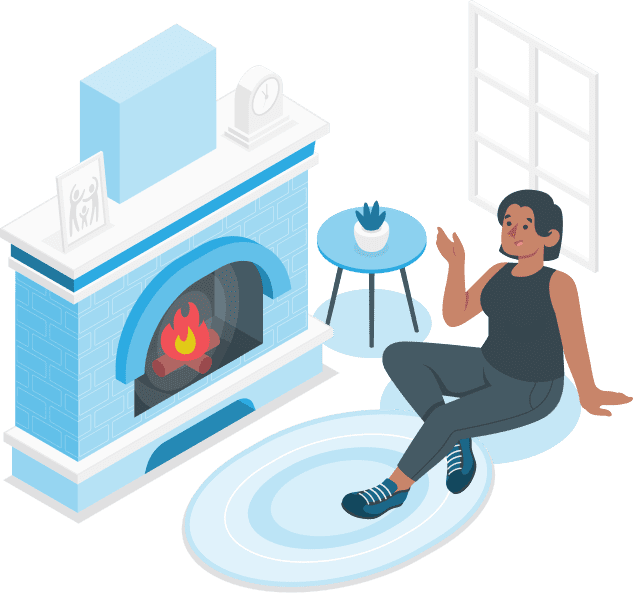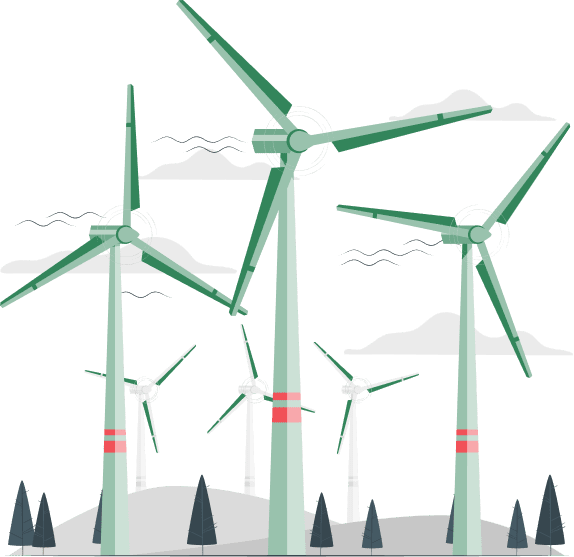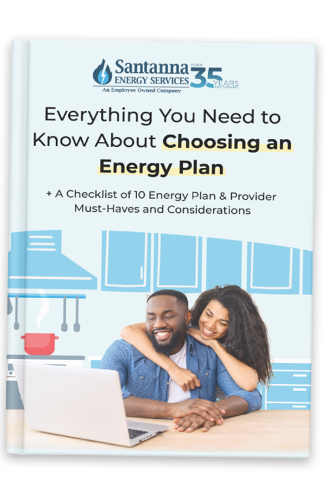Better Energy Solutions for Your Home
Better Energy Solutions for Your Home
See why people are switching to Santanna Energy for better electricity & natural gas plans!
Existing Customer? Log In Here | Illinois Resident? View Plans Here
4.7 Rating Out of 1,500+ Reviews

Proudly serving residents in Ohio, Illinois, Pennsylvania, Michigan, and Indiana.

Fixed-Rate Energy
A fixed–rate energy plan is an energy plan that provides customers with a rate that does not change for a specified period of time. This type of plan offers customers the stability of knowing what their energy costs will be for the duration of the agreement. Fixed–rate plans provide customers with the peace of mind that comes from knowing that their energy costs won’t be affected by fluctuations in the market.
Unlimited Energy
An unlimited energy plan is a way to pay for your electricity that’s super simple and hassle-free. Instead of paying for every unit of electricity you use, you pay one set amount each month. This means you can use as much electricity as you want without having to worry about paying extra*. And the best part? You’ll always know how much you’re going to pay, making it easy to plan and budget.


Earth-Friendly Electricity
Renewable Energy is energy from sources that are naturally replenishing such as wind, solar, and hydropower. Santanna matches 100% of your usage with renewable energy credits that provide the opportunity to help the environment remain carbon neutral or even reduce the carbon footprint with this product. We do that by buying RECs within various energy sources**. All of this is to say that we can help you make an easy, sustainable choice for your electricity provider and do good at the same time.
Earth-Friendly Gas
Earth-Friendly Gas is a natural gas option that allows you to enjoy all the benefits of your energy service while helping to create ecological balance in the world. This is done by carbon offsetting: making up for our emissions here by reducing emissions elsewhere. So, simply by heating your home, you can be helping the planet.


Still Have Questions?
Choosing an energy plan can be a tricky task full of complicated jargon and restrictions based on where you live and what you’re looking for. But it doesn’t have to be! This guide will provide a comprehensive overview of everything you need to consider when choosing an energy plan in your area. Download your FREE eBook now for answers.
Easy Energy Solutions for Your Home. More Peace of Mind.
How it Works
Why Santanna Energy?
Your peace of mind is our priority #1.

Join Santanna Energy Rewards
As part of our mission to create life-long relationships by providing quality service to our customers, we’ve created Santanna Energy Rewards. As a valued customer, you can now access exclusive rewards, monthly giveaways, and much more.
Fair Prices. No Tricks. No Hidden Fees.
Our team is committed to providing seriously competitive energy solutions that have up-front pricing. We’re available 5 days a week to help answer any questions you have about our solutions or the options available to you.

Over 500,000 Customers Served – Near Perfect Reviews
Easy Energy Solutions for Your Home. More Peace of Mind.
See why people are switching to Santanna Energy for better electricity & natural gas plans!

* Restrictions apply. Enrollment based upon program eligibility. Customers using more than 125% of normal monthly usage as determined by Santanna may be required to switch plans.
** Santanna will purchase Renewable Energy Certificates (RECs) from a variety of renewable generation types in the U.S. to match 100% of your electricity consumption.




